
Vajdahunyad Castle (Hungarian name: Vajdahunyad vara or Vajdahunyad-var) is called the most romantic and one of the most beautiful castles in Budapest.
Despite the resemblance to the old castles, the castle of Vajdahunyad was built in 1896 in preparation for the celebration of the 1000th anniversary of Hungary and designed by architect Ignatz Alpara who wanted his creation to represent elements, showing a thousand years of history and architectural evolution of the country.
The original castle was built of wood, plywood and papier-mâché and was a temporary exhibition building. But due to the interest and the outbreak of love Hungarians to the construction, in the years 1904-1908 the castle was rebuilt of more lasting and solid materials - stone, brick and decorative items.
Today's Vajdahunyad castle is a complex consisting of a group of buildings and objects of architectural combines some of the best buildings of the historical Hungary into a single eclectic Palace. For this reason, the architecture of the complex there are various styles: Romanesque, Gothic, Renaissance and Baroque.
The architecture of the castle includes elements of Vajdahunyad castle (Corvin castle, now in Romania), the clock tower in sighişoara (Romania), Romanesque Church in the Yak (Hungary), the Baroque esterházy Palace (Austria) and a number of other castles, towers, churches and historical sites.
As the property's most visible and recognizable element of the Corvin castle (in Hungarian Vajdahunyad castle), the family nest of the Hungarian Hunyadi dynasty in Transylvania, the complex in Budapest is sometimes called "Vajdahunyad castle".
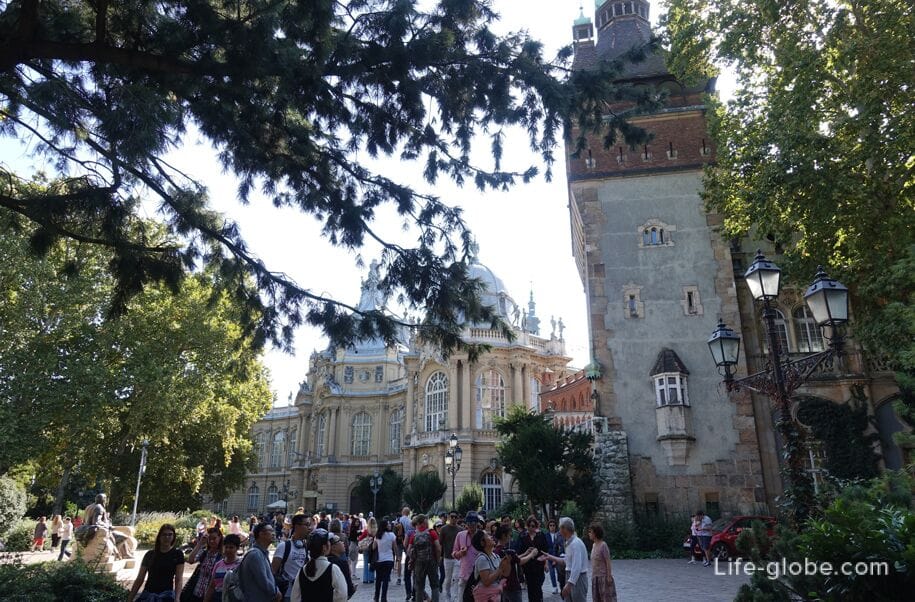

Budapest is Vajdahunyad castle in the Varosliget city Park, near the lake.
Near the castle is a monument to the architect of the castle Ignatz Alparo.
A small bridge leading to the entrance gate to the castle located on the North side of it, runs through part of the lake, which simulates the moat surrounding medieval castles.
Both sides stylized castle gate located towers and gates siege corridor in the upper part thereof. Left (high) tower, called the gate, its prototype was made by the tower of the Church located in the village of Spišský-Stvrtok (Slovakia).
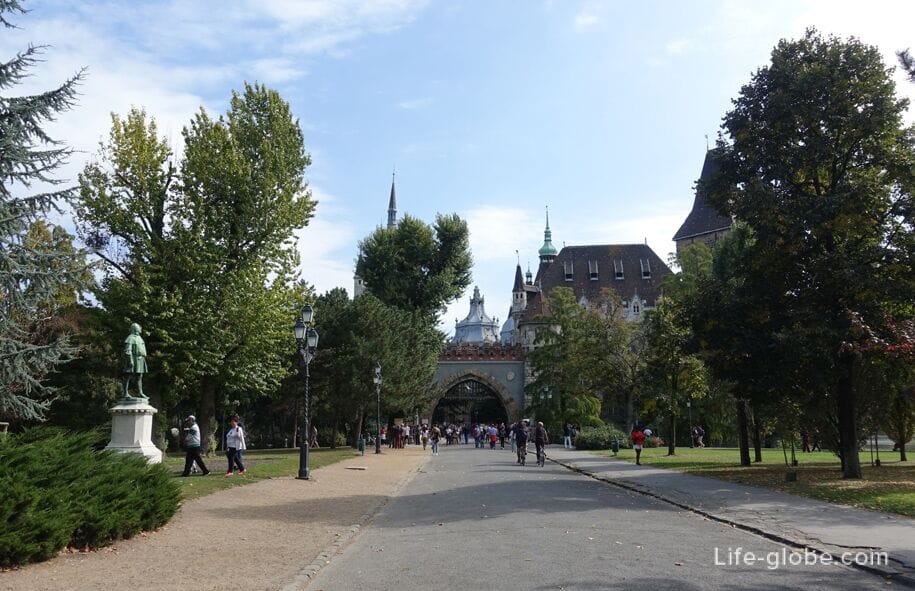

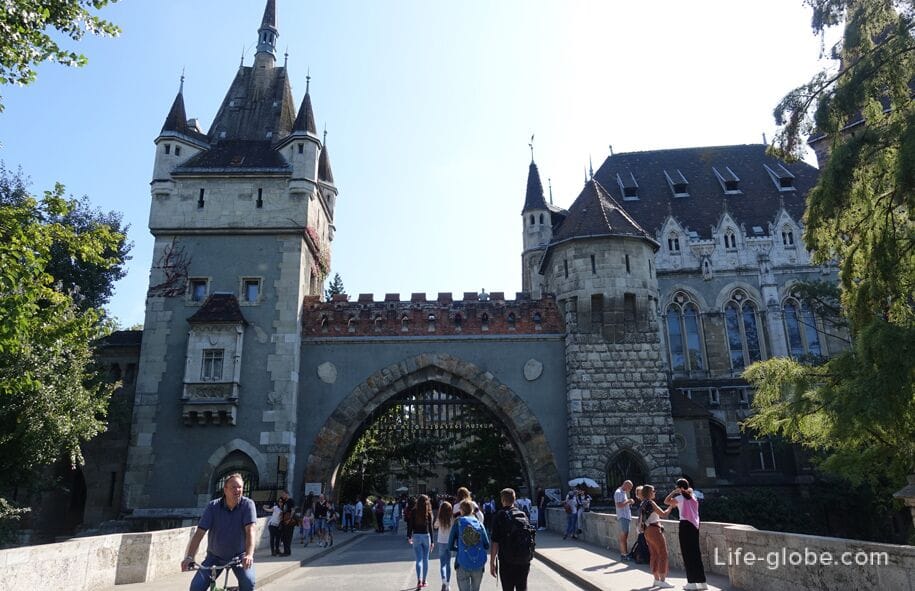
Views of the towers and gates from the inner area of the castle

On the right side, over the entrance gate, is the so-called knight's castle (Romanian system) in the Gothic style, imitating the details of the highland castles, including Corvin castle.
The high tower of the castle, located near the lake, called the tower of torture or "do not be afraid / fear Not." It can be clearly seen from the opposite side of the lake in the Park. The castle also reflected the knights ' hall, some interior and balconies Hunyadi.
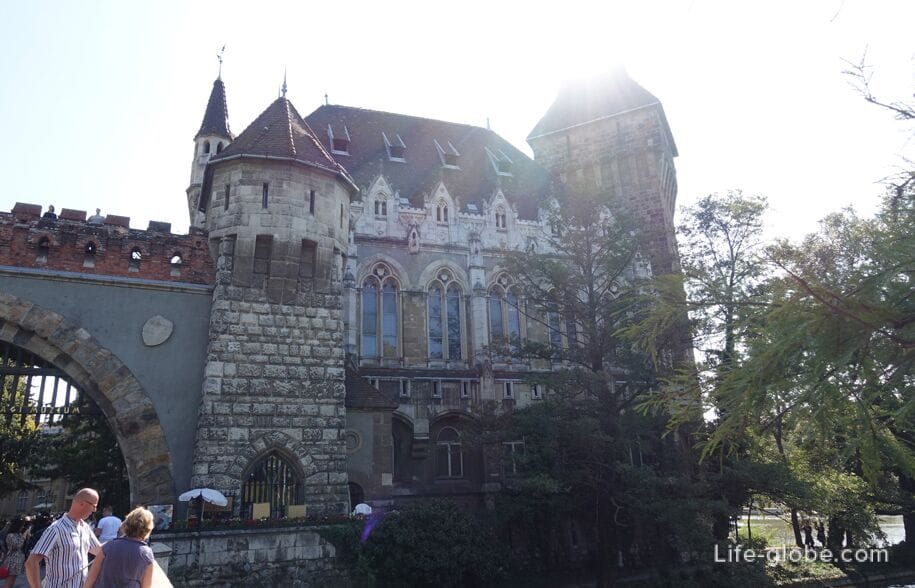
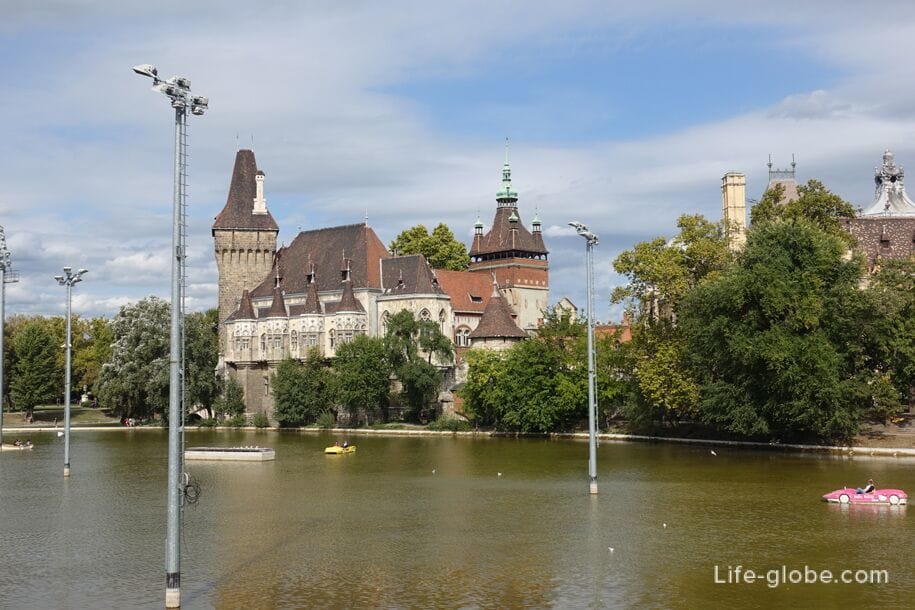
On the territory of the Vajdahunyad castle complex is notable for the tower of the Apostles, which is a copy of clock tower in sighişoara.

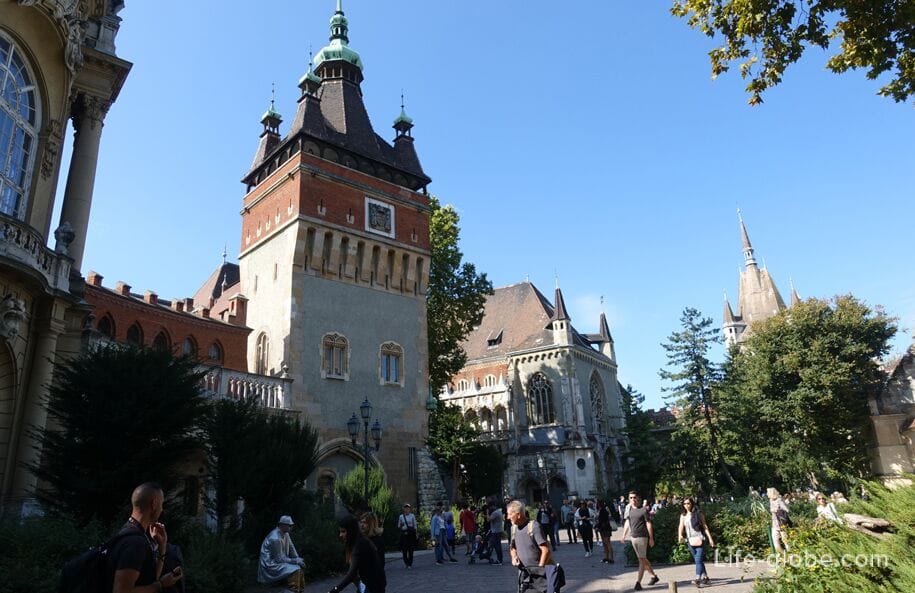
Tower Palace is surrounded by a mixed style.
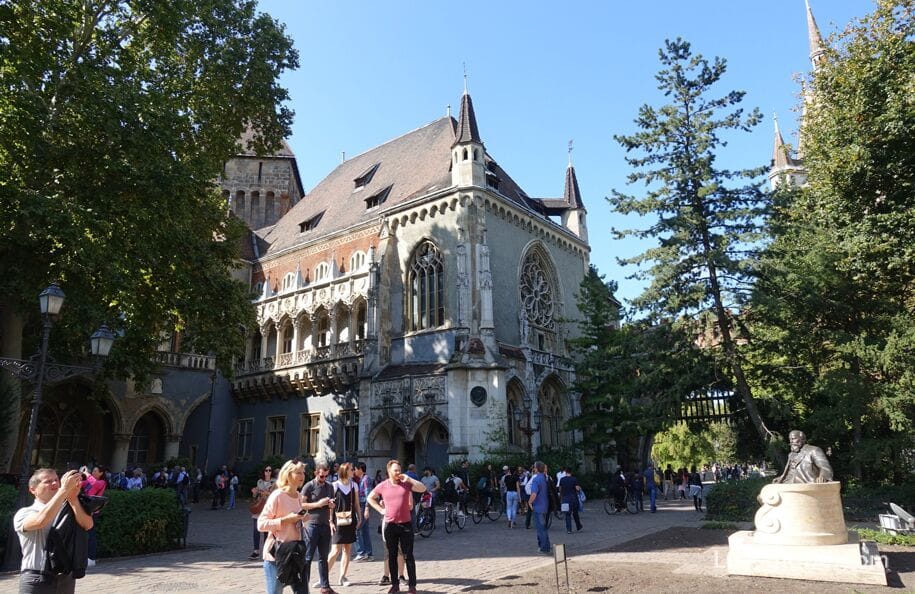

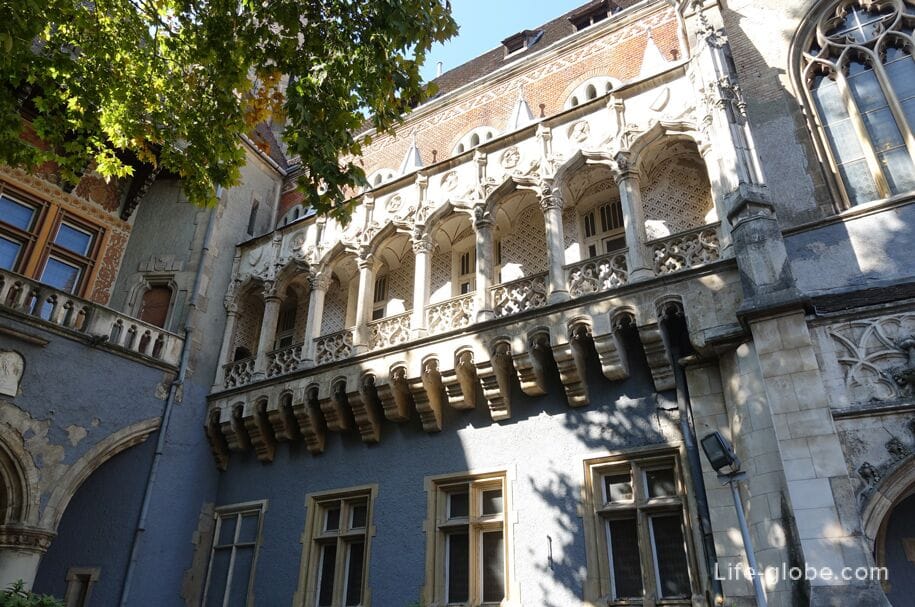
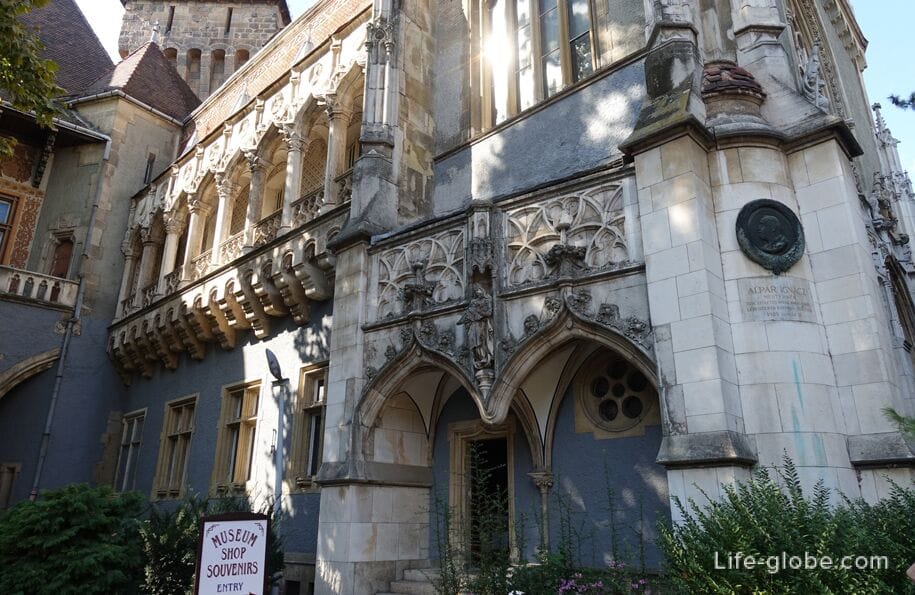

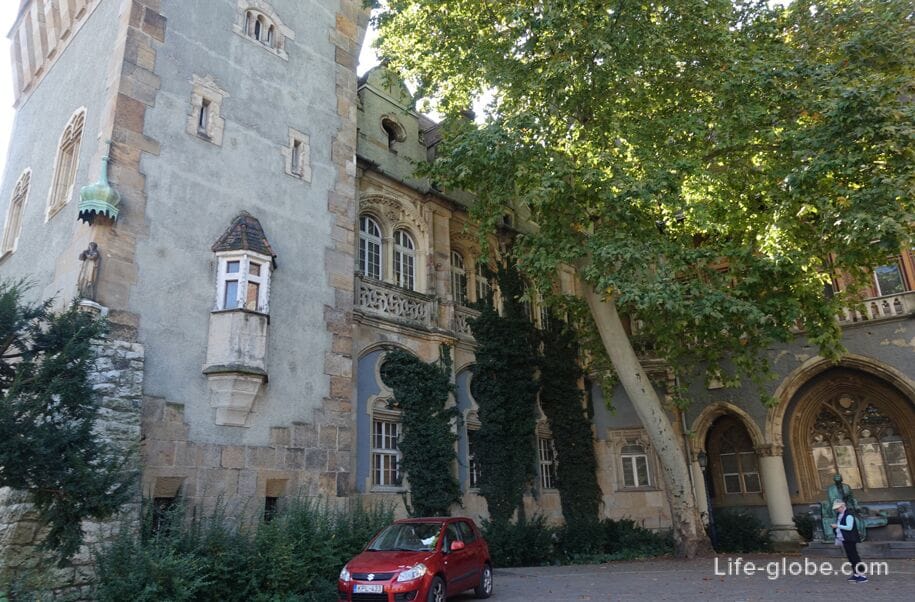
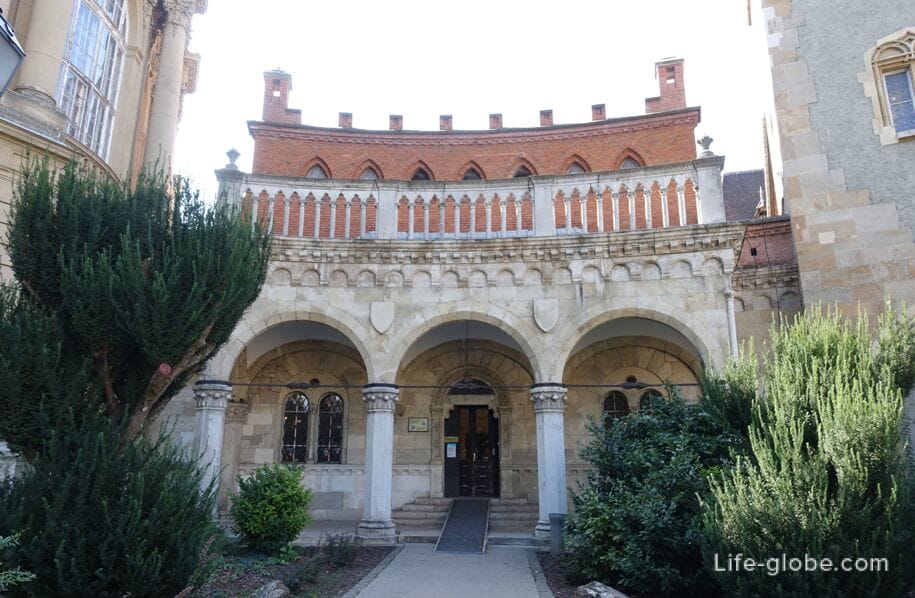
In this part of the castle is a gift shop, a courtyard, a monument to the Hungarian policy and military leaders Sandor Károlyi.



On the left side of the mixed castle located Exca chapel or chapel of Jacob (Jaki kapolna) in the Romanesque style. The idea of constructing a chapel, in particular the main arched portal were borrowed from the Church in the Yak, near the town of Szombathely in Western Hungary. Also the architecture of the building are reviewed with the borrowed elements of other shrines.
Originally the chapel was intended for use as a library, but at the request of the faithful, she was assigned a Church service. The chapel was consecrated in 1915 and is now in effect.
In chapel weddings, masses, concerts, exhibitions and other cultural events.
In front of the chapel is a monument to the Hungarian policy Ignatz Daranyi.
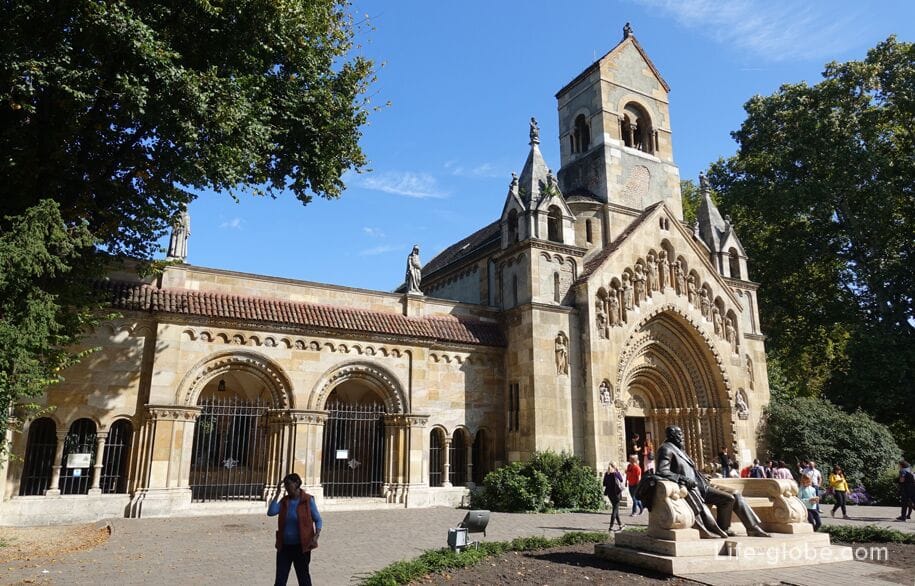
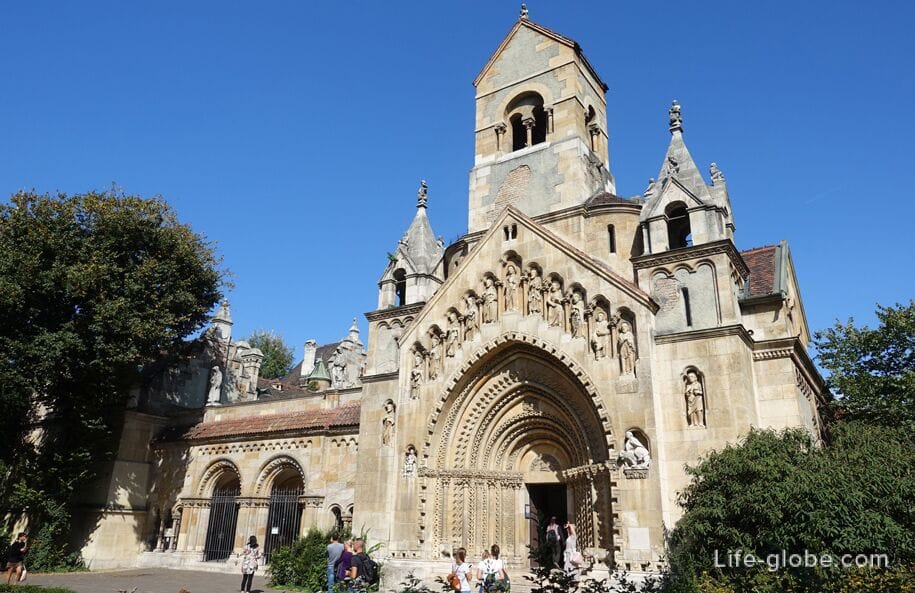
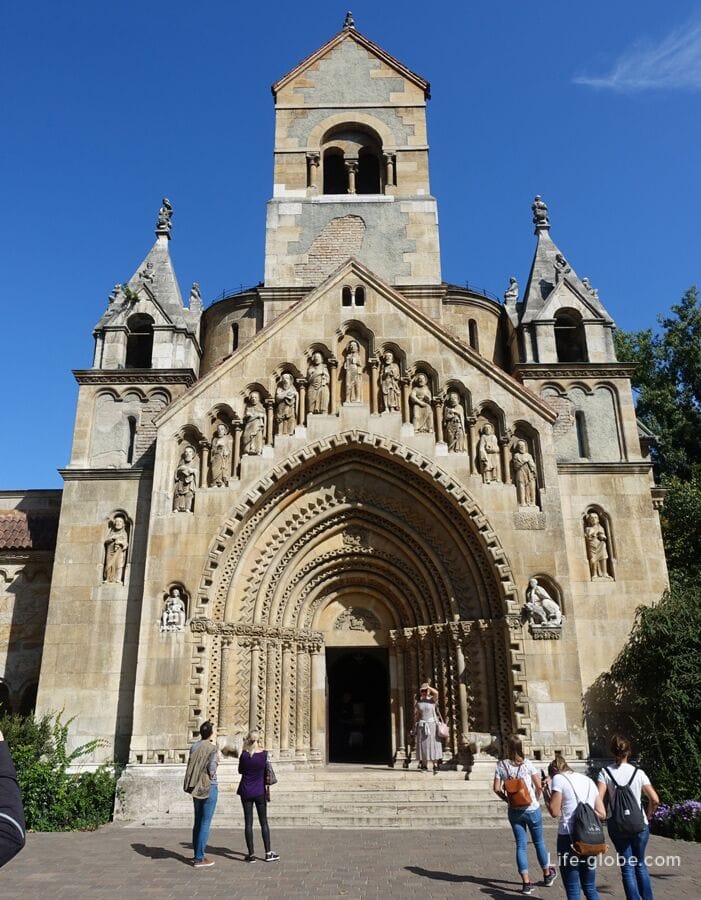
The walls of the chapel there is a small cloister, simulating Roman times.
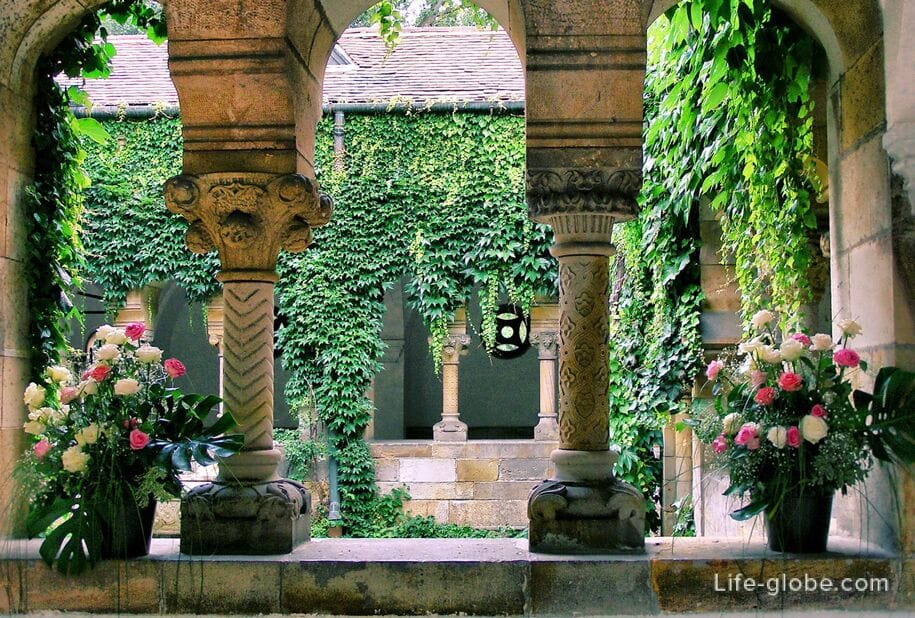
Behind the chapel, facing the lake, is the restaurant "Anonymous."
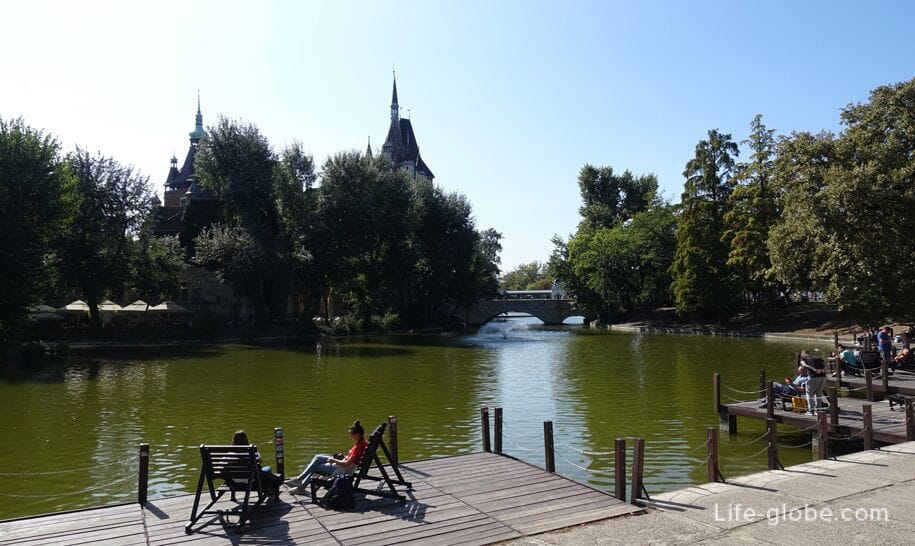
To the right of the main entrance to the chapel on the South side, is one of the most original monuments of Budapest – Anonymous (Anonymus).
The Anonymous monument is shown seated, dressed in a long cloak. In one hand he holds a pen and another with the manuscript. The Anonymous face is almost hidden under the shade of a broad overhanging hood. From the first glance of a figure reminiscent of the familiar games and movies the way of the assassin.
The anonymous author lived in the 12th century, his true identity remains unknown, but he was a scribe, Bela III of Hungary, probably by the chronicler or annalist. As he wrote the chronicle Gesta Hungarorum (Deeds of the Hungarians).
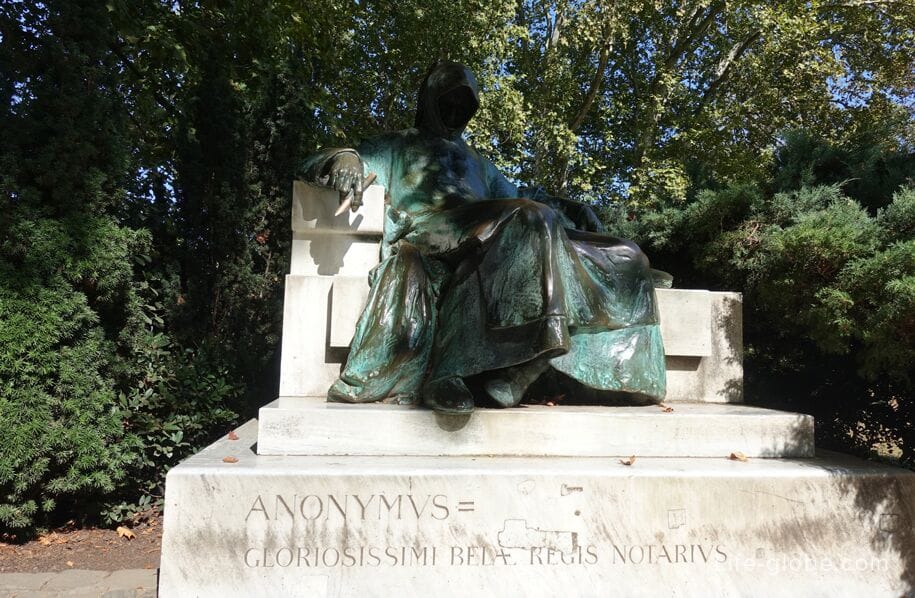
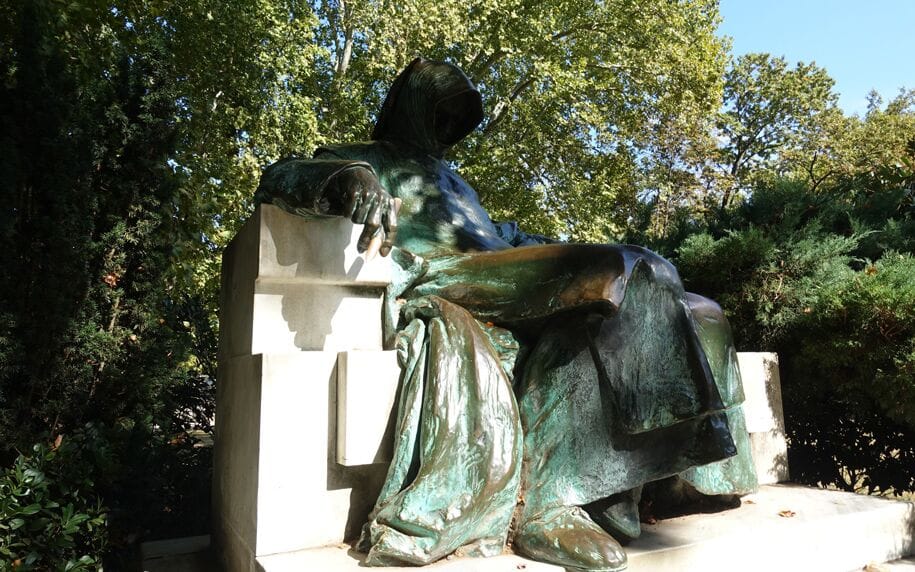
The most impressive building of the Vajdahunyad castle is a building in Baroque style, the architectural basis for which was made by the style of the esterházy Palace.
The dome over the main entrance reflects the architecture of the historical monuments of Alba Iulia (Romania).
In the walls of the Baroque Palace from 1907 is the Hungarian agricultural Museum and a library. Collections of the Museum represent the history and development of both domestic and General European agriculture, including forestry, hunting, fisheries, grape and wine, domestication, breeding, forests and plants.
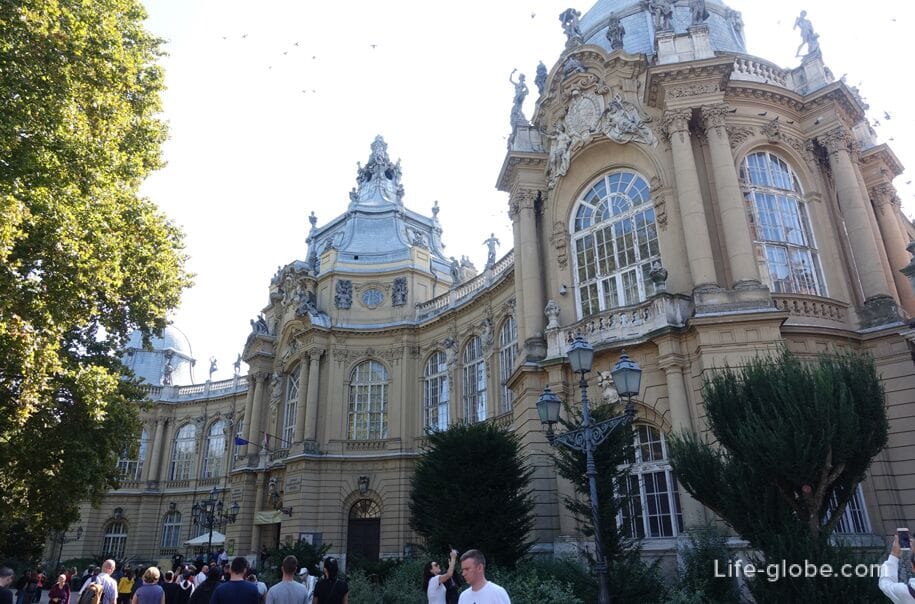
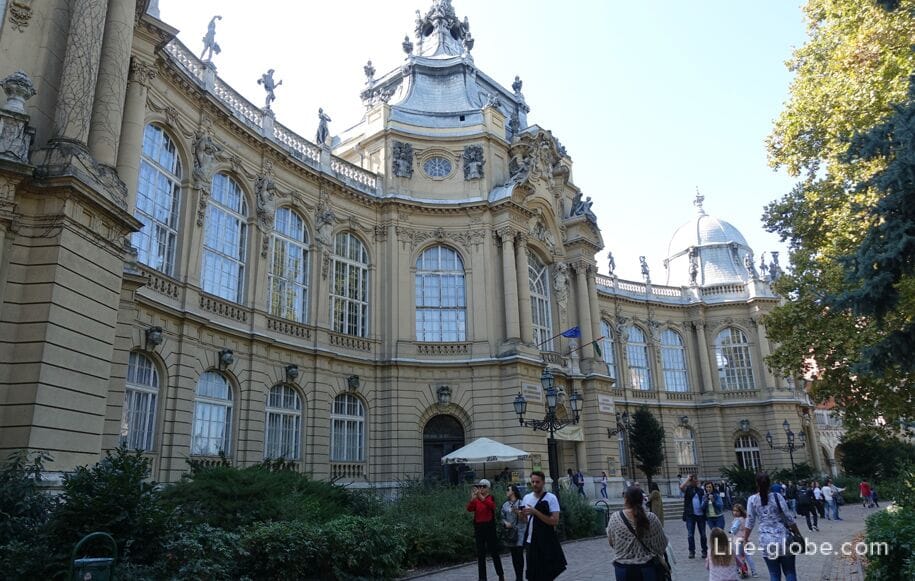

The East (rear) facade of the Museum of the Palace recalls the architecture of the German Renaissance, with elements borrowed in the ensemble of the Catherine's gate in braşov (Romania).

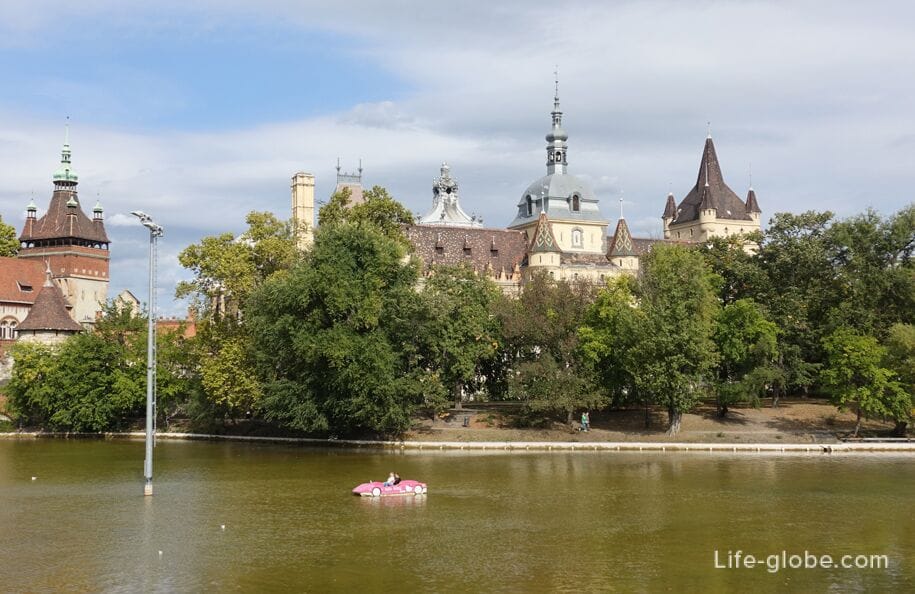
Best surround views of Vajdahunyad castle opened on the East side of the lake surrounding the castle complex. We also see the low French tower, built in the style of early French Renaissance.
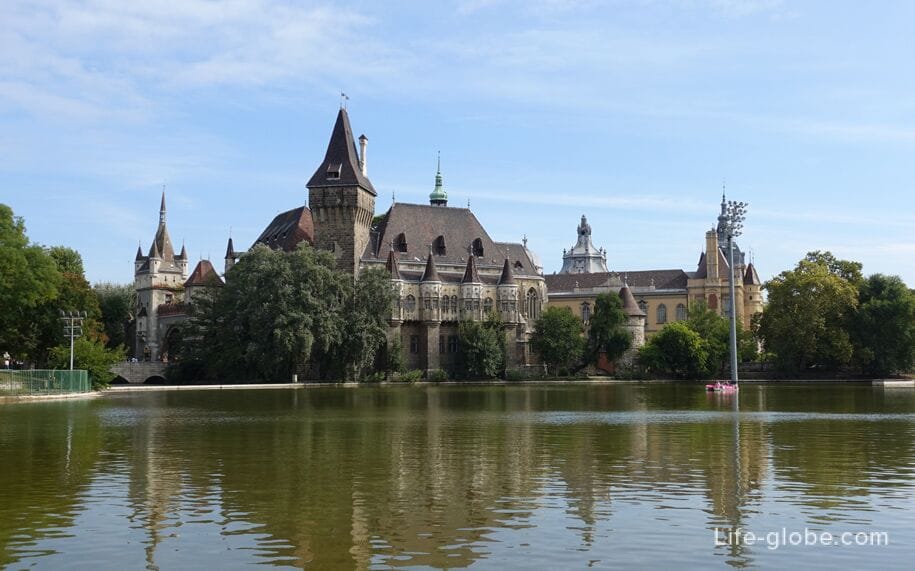
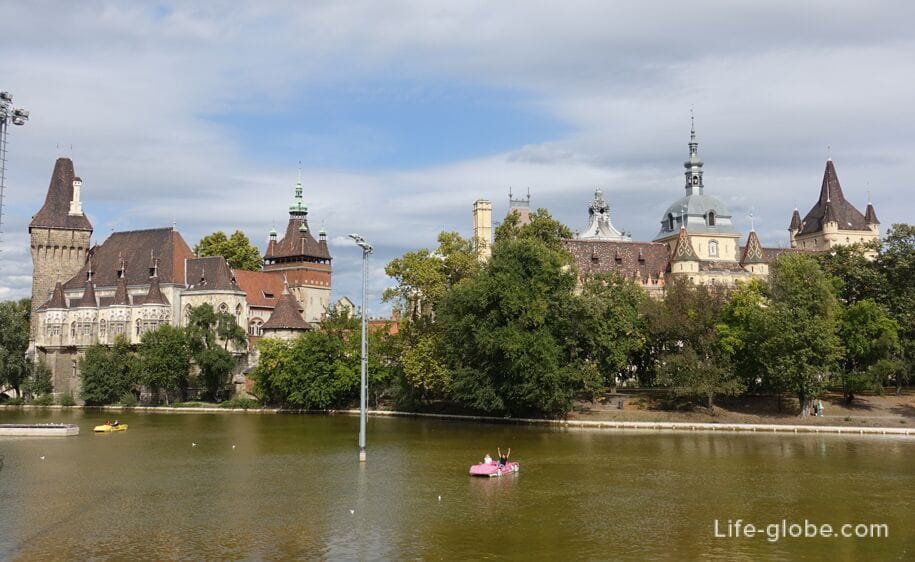

The entrance to the grounds of Vajdahunyad castle is free (free).
Pay a visit to the Museum, as well as for raising the siege on the corridor above the entrance gate and the tower of the Apostles, with panoramic views of the castle complex, the Park Varosliget, and part of the city of Budapest.
A small fee (100 HUF) took over the entrance to Aksuu chapel.
Hours of operation objects, exhibitions and entrance fees we recommend to check before visiting.
The website of the Vajdahunyad castle in Budapest: mezogazdasagimuzeum